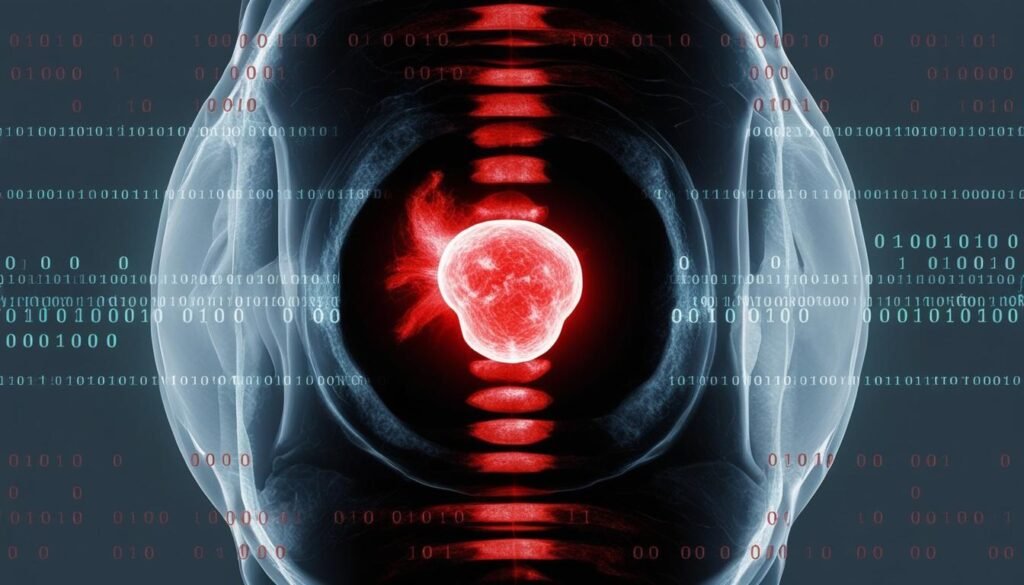Recent advancements in AI for medical image analysis, highlighted by the AutoPET competition, demonstrate the technology’s potential in accurately identifying tumours.
Artificial intelligence (AI) is increasingly being recognised for its potential to enhance medical image analysis, particularly in the realm of oncology. A recent competition, known as AutoPET, has highlighted advances in this field, demonstrating how algorithms can efficiently identify and size tumour lesions through techniques such as positron emission tomography (PET) and computed tomography (CT). Researchers from the Karlsruhe Institute of Technology (KIT) were notably ranked fifth in this international competition, which saw participation from various teams worldwide.
Medical imaging plays a vital role in accurately diagnosing cancer, necessitating precise identification of tumour location, size, and type in order to inform appropriate treatment options. PET imaging utilises radionuclides to examine metabolic processes within the body, revealing that malignant tumours typically display a significantly higher metabolic rate compared to benign tissues. This is often assessed using fluorine-18-deoxyglucose (FDG), a radioactively labelled glucose molecule. Concurrently, CT scans involve the layered examination of the body through X-ray technology to accurately visualise anatomical structures and locate tumours.
The process of determining the dimensions of cancerous lesions can be laborious, as medical professionals often need to manually mark 2D slice images. Professor Rainer Stiefelhagen, who heads the Computer Vision for Human-Computer Interaction Lab at KIT, noted that “automated evaluation using an algorithm would save an enormous amount of time and improve the results.” He, along with doctoral student Zdravko Marinov, collaborated with Professor Jens Kleesiek and Lars Heiliger from the IKIM – Institute for Artificial Intelligence in Medicine in Essen. Their collective efforts in the 2022 AutoPET competition culminated in the achievement of fifth place out of 27 teams, comprising 359 participants.
Organised by Tübingen University Hospital and the LMU Hospital Munich, the AutoPET competition tasked participants with automatically segmenting metabolically active tumour lesions identified on whole-body PET/CT scans. Teams were provided with a comprehensive annotated PET/CT dataset for algorithm training, enabling them to refine their approaches. All submitted algorithms employed deep learning methods, a sophisticated variant of machine learning deploying multi-layered artificial neural networks to uncover intricate patterns within extensive datasets.
Research findings from the competition, recently featured in the journal Nature Machine Intelligence, indicate that a collaborative ensemble of the highest performing algorithms surpassed the capabilities of individual algorithms in detecting tumour lesions. As explained by Stiefelhagen, “the performance of the algorithms in image data evaluation partly depends indeed on the quantity and quality of the data, the algorithm design is another crucial factor, for example with regard to the decisions made in the post-processing of the predicted segmentation.”
Despite the progress made, further research is deemed necessary to enhance these algorithms, reinforcing their resilience against external variations and facilitating their integration into routine clinical practice. The ultimate objective is to fully automate the analysis of medical PET and CT images, paving the way for more efficient and accurate diagnostic procedures in oncology.
Source: Noah Wire Services
- https://www.bamfhealth.com/news/bamf-health-wins-big-at-autopet-ii-challenge/ – This article explains the AutoPET II challenge, the role of PET/CT scans in cancer detection, and the achievements of BAMF Health in the competition, highlighting the use of AI in medical image analysis.
- https://www.sciencedaily.com/releases/2025/01/250102162630.htm – This source details the AutoPET competition, the participation of the Karlsruhe Institute of Technology (KIT), and how algorithms based on deep learning can detect tumor lesions in PET/CT scans.
- https://www.openaccessgovernment.org/how-ai-algorithms-can-revolutionise-medical-imaging-for-cancer-detection/187226/ – This article discusses the AutoPET competition, the ranking of the KIT team, and the use of AI algorithms in automating the segmentation of tumor lesions in PET/CT scans.
- https://www.openaccessgovernment.org/how-ai-algorithms-can-revolutionise-medical-imaging-for-cancer-detection/187226/ – It explains the role of medical imaging in cancer diagnosis, the use of PET and CT scans, and the potential of AI to save time and improve accuracy in tumor detection.
- https://www.sciencedaily.com/releases/2025/01/250102162630.htm – This source provides details on the collaboration between KIT researchers and other institutions, such as the IKIM – Institute for Artificial Intelligence in Medicine, and their achievements in the AutoPET competition.
- https://www.openaccessgovernment.org/how-ai-algorithms-can-revolutionise-medical-imaging-for-cancer-detection/187226/ – It highlights the importance of the quality and quantity of data for training algorithms and the need for further research to improve the robustness of these AI models.
- https://www.sciencedaily.com/releases/2025/01/250102162630.htm – This article explains the use of deep learning methods and the ensemble approach that surpassed individual algorithms in detecting tumor lesions, as reported in the journal Nature Machine Intelligence.
- https://www.bamfhealth.com/news/bamf-health-wins-big-at-autopet-ii-challenge/ – It describes the role of PET imaging using radionuclides, such as FDG, to examine metabolic processes and identify malignant tumors.
- https://www.openaccessgovernment.org/how-ai-algorithms-can-revolutionise-medical-imaging-for-cancer-detection/187226/ – This source details the laborious process of manual marking of 2D slice images by medical professionals and how automated evaluation using algorithms can save time and improve results.
- https://www.sciencedaily.com/releases/2025/01/250102162630.htm – It explains the organization of the AutoPET competition by Tübingen University Hospital and the LMU Hospital Munich, and the task of automatically segmenting metabolically active tumor lesions on whole-body PET/CT scans.
- https://www.openaccessgovernment.org/how-ai-algorithms-can-revolutionise-medical-imaging-for-cancer-detection/187226/ – This article discusses the long-term goal of fully automating the analysis of medical PET and CT images to enhance diagnostic procedures in oncology.















